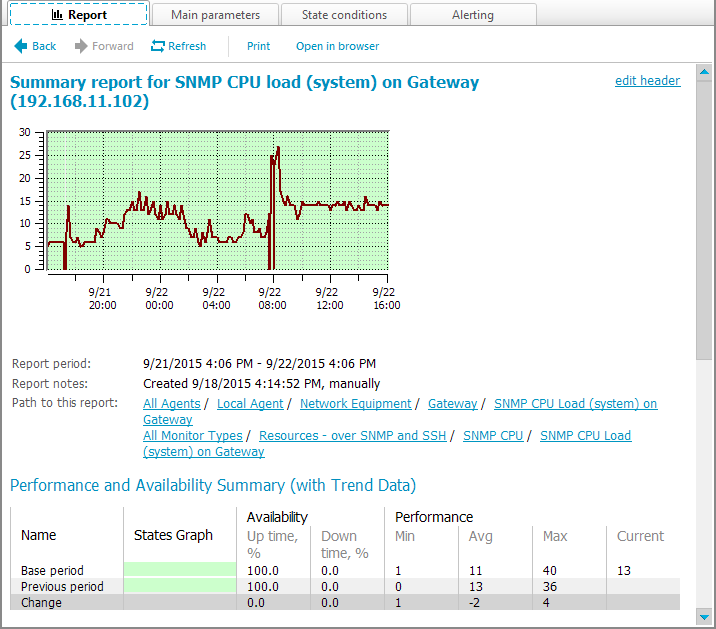The monitoring of essential Linux servers and services is an important part of system administration. Most network services are monitored for performance or availability, or both. IPHost Network Monitor can do both availability and performance monitoring of Linux servers.
Monitoring Linux systems is possible using two methods in current version of IPHost Network Monitor:
- SNMP (Simple Network Monitoring Protocol). For this method an “SNMP agent”, such as net-SNMP had to be installed on the computers being monitored;
- SSH (Secure Shell). You can either write a specific script for your current task, or use several predefined SSH monitors.
In current version, IPHost is able to monitor Unix/Linux systems using dedicated monitors supporting Linux/UNIX without the need to install or change anything on the target machines. Either SSH scripts or SNMP protocol are used to collect information on CPU load, memory usage, disks and so on.

Linux Network Monitoring
Using the SSH scripts or SNMP, IPHost Network Monitor can collect information about CPU load, memory usage or hard disks (free space, swap file usage) directly from the Ubuntu systems. You can do Ubuntu server and network monitoring using the following monitor types:
- CPU Load Monitor: monitors the load average of a Linux/UNIX system using Secure Shell (SSH connection) or SNMP protocol.
- Available Physical Memory: monitors the available memory in total and in percent using SSH connection or SNMP protocol.
- Available Disk Space: monitors the free disk space available. It shows the total free disk space (sum), and the free disk space in percent for every mounted partition (volume) using either SSH connection or SNMP protocol.
- Swap Usage: monitors percentage of swap usage for every disk (partition) using either SSH or SNMP. High swap usage can be a signal on system slowdown.
- Processes Total: monitors the number of active processes in the system using either SSH connection or SNMP protocol. The more the number is the slower the system.
- Number of User Sessions: monitors the number of user sessions using SSH. It is recommended to keep the number low.
- SNMP Traffic Volume: monitors traffic volume on a device for the specified period of time using Simple Network Management Protocol (SNMP).
- SNMP Traffic Speed: monitors average traffic speed on a device using SNMP.
You can also monitor a device availability using PING monitor.
When SSH is used, the data is sent via a secure connection, ensuring you do not compromise the security of your systems while transferring monitoring data via the network.
You can call these monitors “Linux monitors”, but actually the SSH is also supported by Mac OS X, so you can simply integrate Macintosh monitoring into IPHost Network Monitor.
IPHost Network Monitor is More Than an Ubuntu Network Monitor
Monitoring the network and their servers is simple using IPHost Network Monitor. The network monitoring templates will allow you to monitor Linux and Windows servers, file servers, web servers, etc. And CPU monitoring helps you to keep control of the loads that your servers and workstations are subject to, helping you to distribute loads more evenly, and increase network speed and performance.
With WMI monitoring (Windows Management Instrumentation) you have an enhanced options for managing Windows based systems.


Comments are closed.